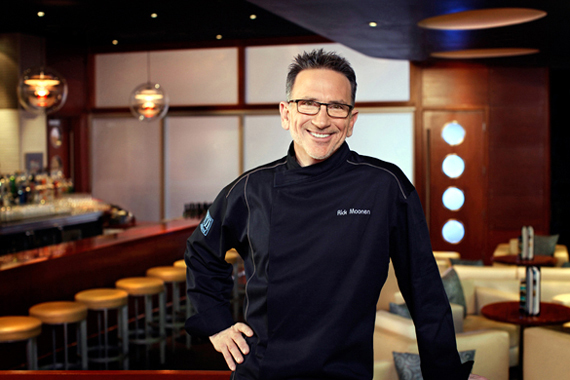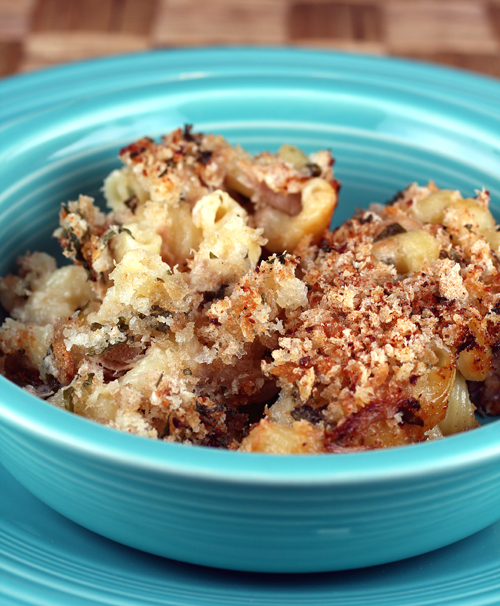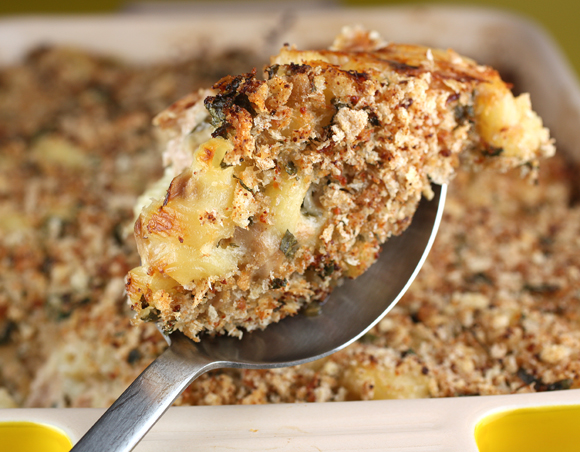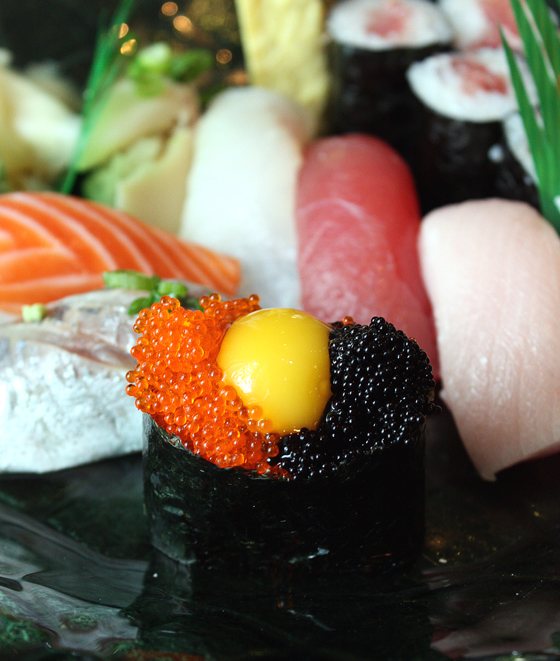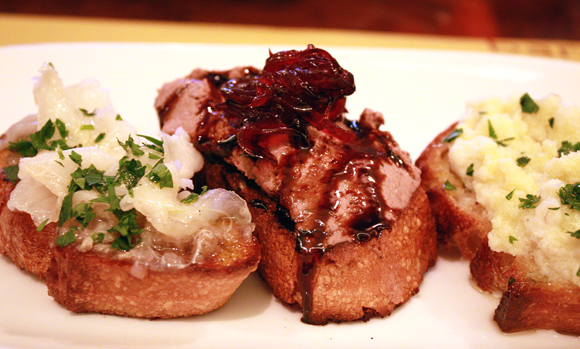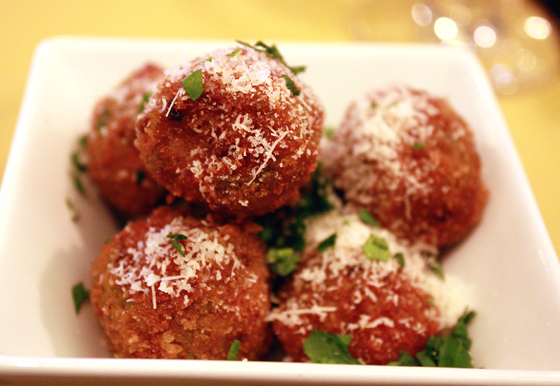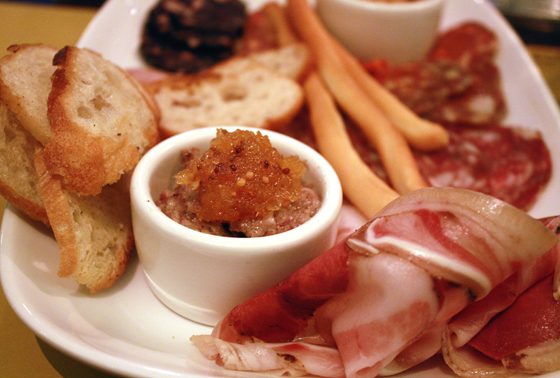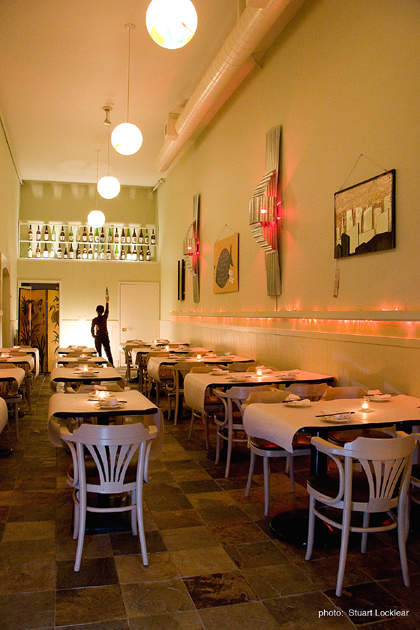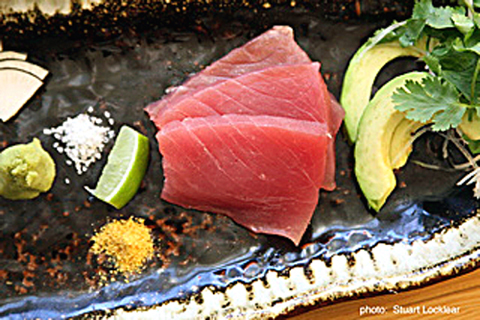Take Five with Chef Rick Moonen, On “Top Chef Masters” and Saving the World’s Seafood Populations
In person, talking a mile a minute, and jumping up from his chair to make a point with arms gesturing wildly, Chef Rick Moonen is a blur of frenetic energy just as he is as a competitor on this season’s “Top Chef Masters.”
The 53-year-old chef jokes that he gets mistaken for fellow bespectacled, facial-scruffed Chef Rick Bayless ever since the two of them appeared together on the first season of that wildly popular Bravo TV show. This despite the fact that Moonen is a Las Vegas chef, whose restaurant RM Seafood is known for its menu of eco-friendly fish, and Bayless is a Chicago chef, whose restaurants Frontera Grill and Topolobampo, are famous for authentic Mexican cuisine.
Indeed, at RM Seafood, Moonen has banned Chilean Sea Bass, Japanese hamachi, monkfish, and grouper from his menu because they are so over-fished. He also refuses to serve Atlantic farm-raised salmon because of its destructive impact on the environment. Instead, he takes pride in featuring sustainable, but lesser known species such as Hawaiian walu and Australian ocean trout.
If he hadn’t been a chef, Moonen, who grew up playing with chemistry sets and Tinkertoys, says he would have been a teacher or doctor of alternative medicine. Good thing for us, he chose the culinary road instead.
Moonen was in Monterey this past weekend, where he was one of the guest chefs at the ninth annual “Cooking for Solutions” event at the Monterey Bay Aquarium. I caught up with him during a break to chat about his redemption on this season’s “Top Chef Masters” and about his dedication to the world’s oceans.
Q: When I interviewed Chef Michael Chiarello of Bottega in Yountville about his defeat in last year’s ‘Top Chef Masters,’ he said you were the one who really would have given him a run for his money in the competition. Was it a huge disappointment to you last season when you were knocked out practically at the start because you weren’t able to plate anything before time ran out in the first ‘Quick Fire’ challenge?
A: I would have beat him. He knows it. I know it. (laughs) If I had just put a piece of parsley on the plate, I would have had it.
That’s why this year, they created the ‘Moonen Rule.’ The ‘Quick Fire’ scores don’t count now in the final tally.
Q: That’s right! Seriously, that change came about because of what happened to you last year?
A: No one told me that officially. But I think it is the ‘Moonen Rule.’
It was a very big disappointment for me last year. I realized I blew it. It’s me, I’m anal-retentive, compulsive, ADD-Rick. Imagine you’re a clown. I grab you and put a gun to your head and tell you that you have to be funny. That’s what it felt like. Now, if you had given me a minute to really think and organize, I would have kicked his butt.
Q: Why did you want to do the show in the first place?

